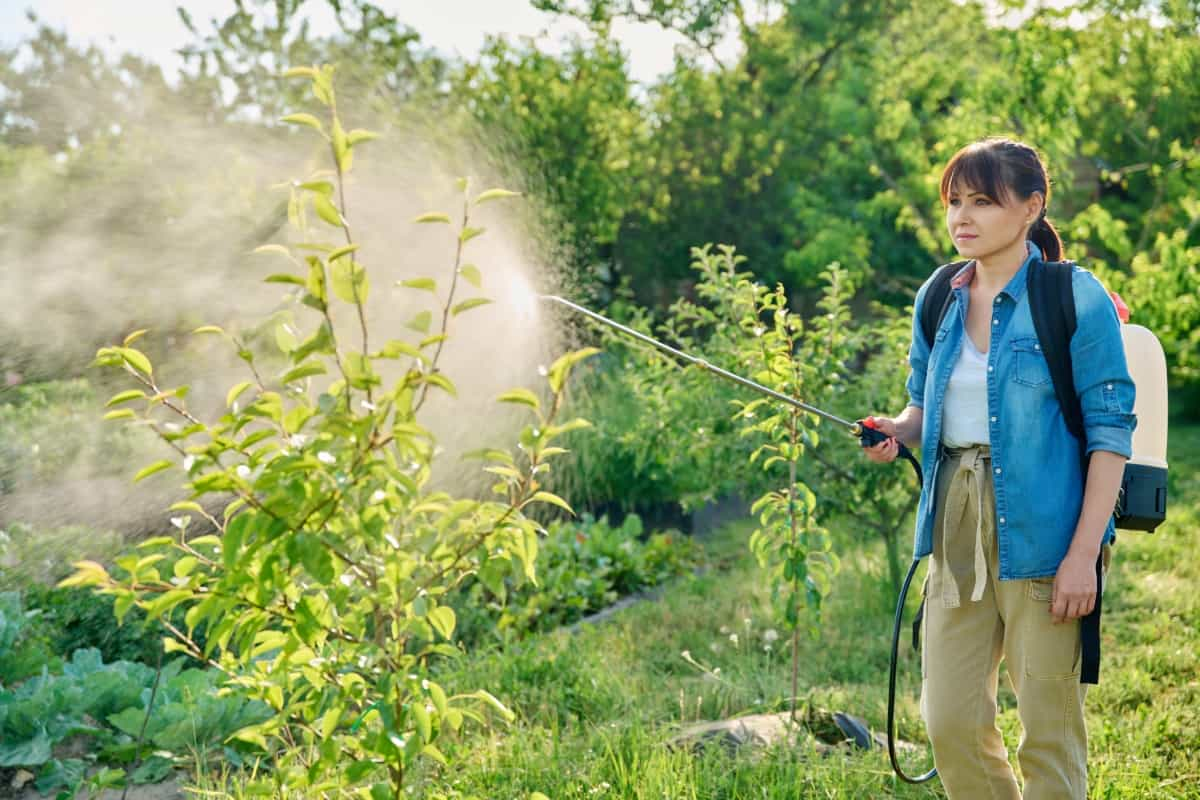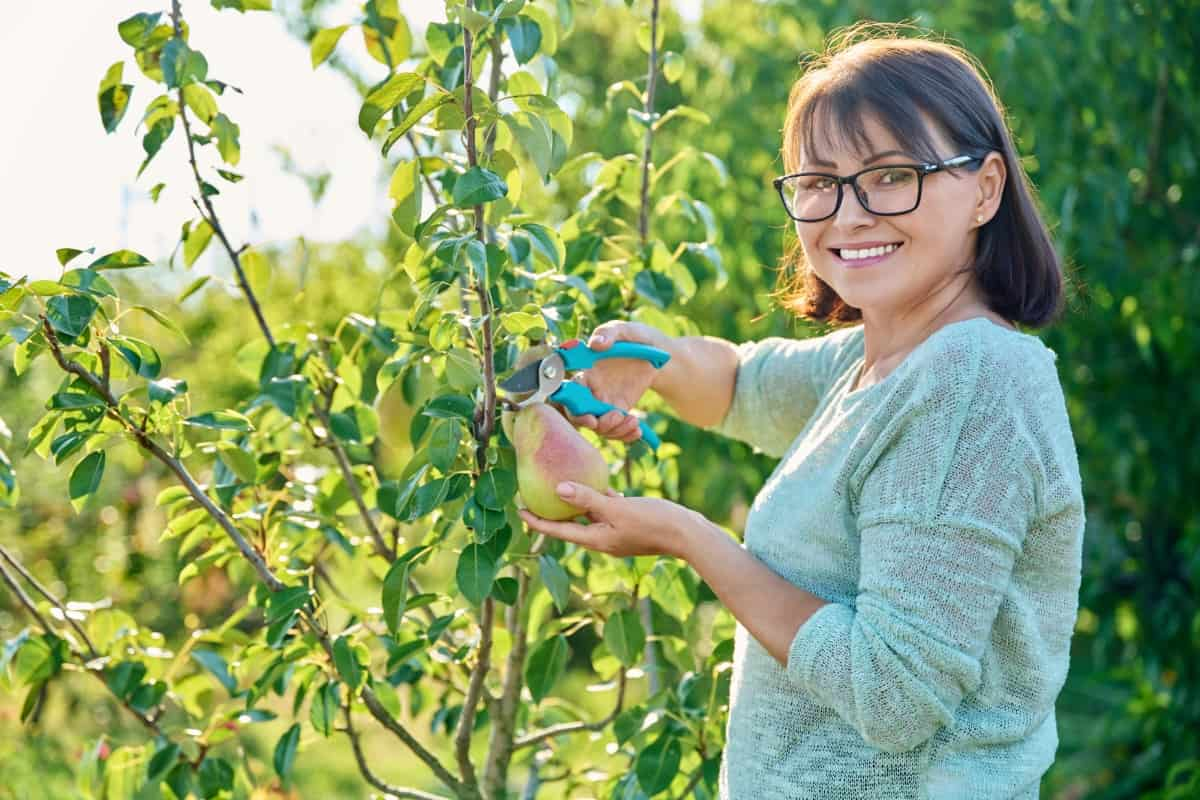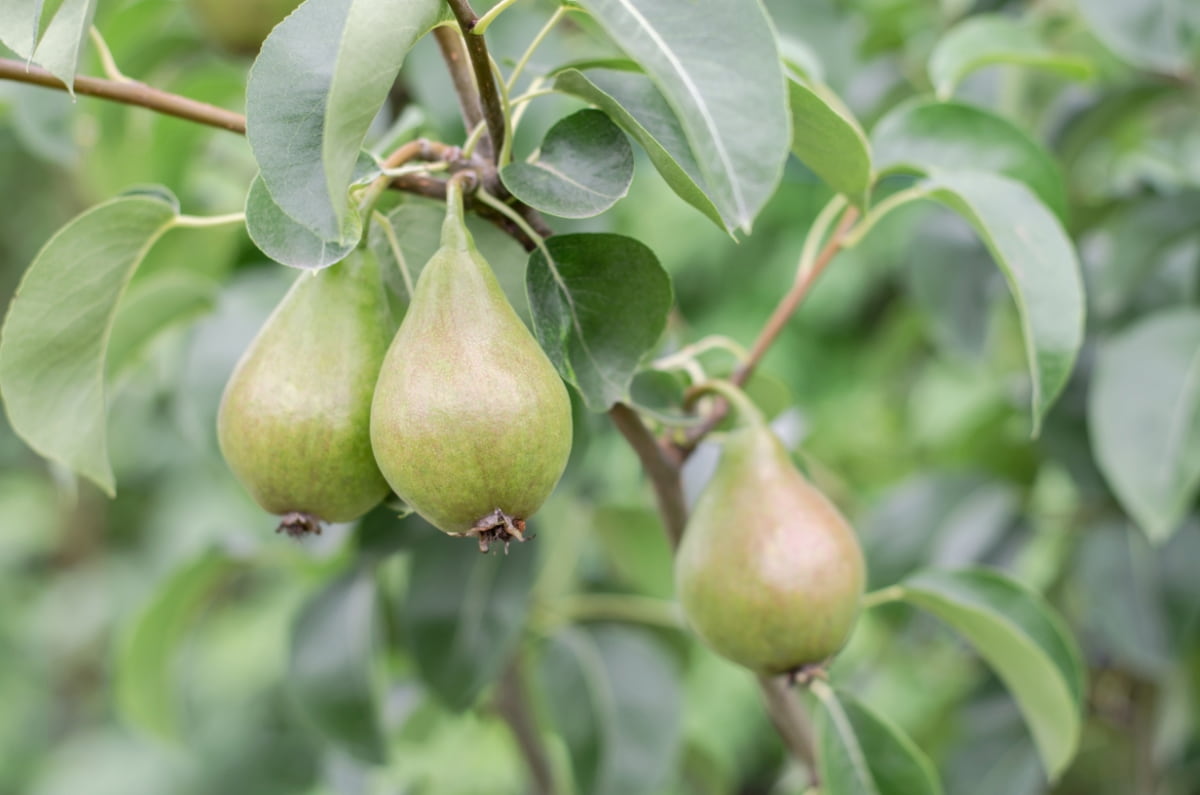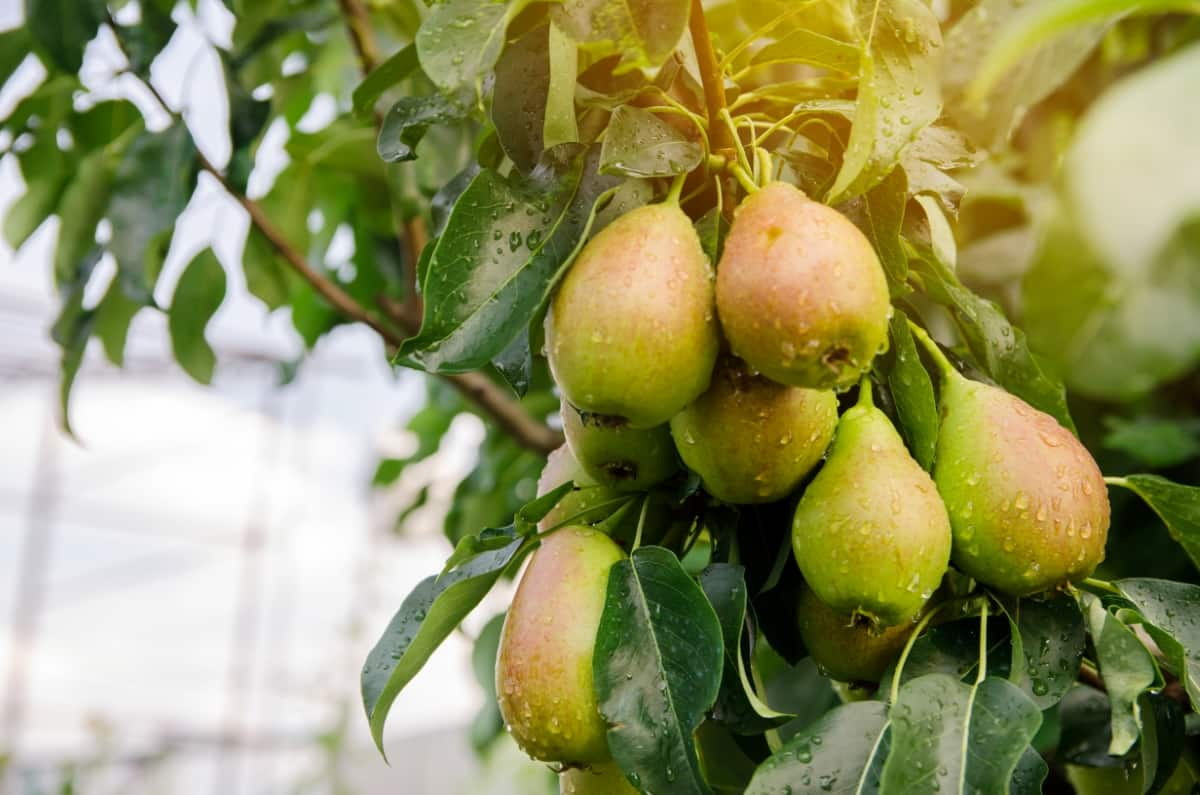Natural and organic pest control methods offer an eco-friendly alternative that helps protect your pear trees, surrounding wildlife, and the people who enjoy your fruit. Whether you’re a beginner or an experienced gardener with pear trees, this guide will equip you with the knowledge and tools to protect your pear trees from common pests while promoting a sustainable and chemical-free approach to fruit cultivation.

How to Control Pear Pests Naturally
Pear Pests: Identifying the Most Common Pests and Their Impact on Your Crop
- Common pests affecting pear trees include the San Jose scale, Pear psylla, Green peach aphid, Stem borer, Root borer, Codling moth, Thrips, and Mites.
- The San Jose scale is a tiny, armored insect that infests bark and branches.
- Pear psyllas are small, jumping insects that damage leaves and cause honeydew excretion.
- Green peach aphids feed on new growth, causing distortion and spreading diseases.
- Stem borers and root borers tunnel into the tree, weakening it.
- The Codling moth is notorious for damaging pear fruits.
- Thrips and mites are tiny pests that harm leaves and reduce fruit quality.
Using Neem Oil to Control Pear Pests: A Safe and Effective Method
It is a safe and effective method for controlling pear pests. Extracted from the neem tree, it acts as a natural pesticide and insect growth regulator. Neem oil disrupts the life cycle of common pear pests like aphids and scales, reducing their populations and preventing damage to the crop. It is eco-friendly and poses minimal risk to beneficial insects, humans, and the environment. Regular application during the growing season can help protect pear trees from infestations, making neem oil a sustainable choice for pest control in pear orchards.
The Role of Beneficial Insects in Controlling Pear Pests: Introduction of Predatory Insects
Beneficial insects play a crucial role in pear pest control by serving as natural predators of harmful pests. Ladybugs, lacewings, and parasitoid wasps are examples of predatory insects introduced into pear orchards. These beneficial insects feed on common pests like aphids, mites, and caterpillars, helping to maintain an ecosystem and reduce the usage of chemical pesticides. By introducing these allies, growers can achieve effective and environmentally friendly pest management, safeguarding their pear crops and promoting sustainable agriculture.
Companion Planting: How Planting Certain Plants Together Can Deter Pear Pests
Companion planting involves strategically planting certain species alongside pear trees to deter pests. Marigolds, for instance, emit odors that repel insects like aphids and nematodes, reducing the risk of infestations in pear orchards. Likewise, planting alliums (garlic, onions) can deter pests with their strong scent. These companion plants create a natural barrier and disrupt the habitat of pear pests, promoting a healthier ecosystem and reducing the reliance on chemical pesticides in pear cultivation while enhancing crop protection.
In case you missed it: How to Control Berry Bush Pests Naturally: How to Get Rid of Them with Natural and Organic Treatment

Crop Rotation: How Rotating Your Pear Crop Can Help Control Pests
Crop rotation is a valuable strategy to control pear pests. By planting different crops in successive seasons, you disrupt the life cycles of problems specific to pear trees, such as codling moths or pear psylla.
This prevents a build-up of pest populations in the soil, reducing the likelihood of infestations in subsequent pear crops. Crop rotation also improves soil health and nutrient balance, promoting pear tree vigor. This practice allows growers to enhance pest management while maintaining long-term pear orchard sustainability.
Using Diatomaceous Earth to Control Pear Pests: A Non-Toxic and Organic Method
Diatomaceous earth, a natural sedimentary rock powder, is a non-toxic and organic method for pear pest control. When sprinkled on the soil or directly on pear trees, it acts as a desiccant, dehydrating and damaging the exoskeletons of pests like insects and slugs, ultimately leading to their demise. It’s safe for humans and beneficial insects and can effectively control various pests. Diatomaceous earth (DE) is an eco-friendly alternative to chemical pesticides, making it a valuable option for organic and sustainable pear cultivation.
Traps and Barriers: How to Use Traps and Barriers to Control Pear Pests
Traps and barriers are essential tools for pear pest control. Sticky traps capture flying insects like fruit flies and moths, stopping them from laying eggs on pears. Pheromone traps can disrupt the mating patterns of pests. Physical barriers like row covers protect pear trees from crawling pests like beetles and caterpillars. These methods act as a first line of defense, reducing pest populations and the need for chemical intervention. Integrated into a pest management plan, traps and barriers are effective and eco-friendly ways to safeguard pear crops.
Biological Control: How to Use Parasitic Wasps to Control Pear Pests
Parasitic wasps, such as Trichogramma species, are a biological control method for pear pests. These small wasps lay their eggs inside the eggs of pests like codling moths. When these wasp larvae hatch, they consume the pest eggs, reducing their populations. To use parasitic wasps effectively, release them into the pear orchard during the pest’s active season. They provide a natural and eco-friendly means of pest management, promoting a healthier and more sustainable pear crop while minimizing the need for chemical pesticides.
In case you missed it: How to Control Amaryllis Pests Naturally: How to Get Rid of Them with Natural and Organic Treatment

Integrated Pest Management (IPM): A Holistic Approach to Controlling Pear Pests
Integrated Pest Management (IPM) is a comprehensive strategy for pear pest control that combines multiple techniques to minimize crop damage while reducing environmental impact. It incorporates natural predators, like ladybugs and parasitic wasps, and employs cultural practices such as crop rotation and maintaining healthy soil to deter pests.
Monitoring and early pest detection are integral to IPM, allowing timely intervention. Additionally, traps, barriers, and organic pesticides are used sparingly when necessary. By considering the ecology of the orchard and minimizing chemical use, IPM promotes sustainable pear cultivation, preserving both crop health and the environment.
Table for Controlling Pear Pest Control with Natural and Organic Treatment
| Pest | Natural and Organic Treatment |
| San Jose Scale | Prune and remove heavily infested branches Apply horticultural oil spray to suffocate scale insects. Introduce beneficial insects like ladybugs and parasitoid wasps. |
| Pear Psylla | Prune and destroy infested twigs and branches. Use reflective mulch to deter psylla from climbing the tree. Introduce natural predators like lacewings and ladybugs. |
| Green Peach Aphid | Blast aphids off the tree with a strong stream of water. Plant companion plants like marigolds and nasturtiums to attract beneficial insects. Release ladybugs and lacewings for aphid control. |
| Stem Borer | Remove and destroy affected branches and twigs. Apply neem oil to the affected areas. Encourage natural predators like birds and parasitoid wasps. |
| Root Borer | Keep the area around the base of the tree clear of debris. Apply beneficial nematodes to the soil. |
| Codling Moth | Use pheromone traps to monitor and control moth populations. Wrap tree trunks with sticky bands to prevent larvae from climbing. |
| Thrips | Use reflective mulch or aluminum foil around the base of the tree. Release predatory mites or lacewings for thrip control. |
| Mites | Spray with a strong jet of water to dislodge mites. Apply neem oil or insecticidal soap to affected areas. Encourage natural predators like predatory mites and ladybugs. |
In case you missed it: How to Control Poppy Pests Naturally: How to Get Rid of Them with Natural and Organic Treatment

Conclusion
In conclusion, managing pear pests through natural and organic treatments offers an eco-friendly and sustainable approach to preserving the health of pear orchards. Growers can effectively deter pests by employing beneficial insects, neem oil, and crop rotation without resorting to chemical pesticides. This holistic approach protects pear crops and supports a greener and more environmentally conscious approach to agriculture.
- Deworming Schedule for Dogs/Puppies: A Beginners Guide
- How to Prevent and Control Parasites in Goats
- Beneficial Insects in Pest Management
- Natural Solutions for Pest Control in Flower Gardens
- Types of Fungicides Used in Agriculture
- Common Issues in the Fruit Development Stage of Pomegranate Farming
- Fruit Development Issues in Papaya: Easy Solutions and Treatment
- Soil-Borne Diseases and How to Protect Your Plants
- Practices to Prevent Disease Spread in the Garden